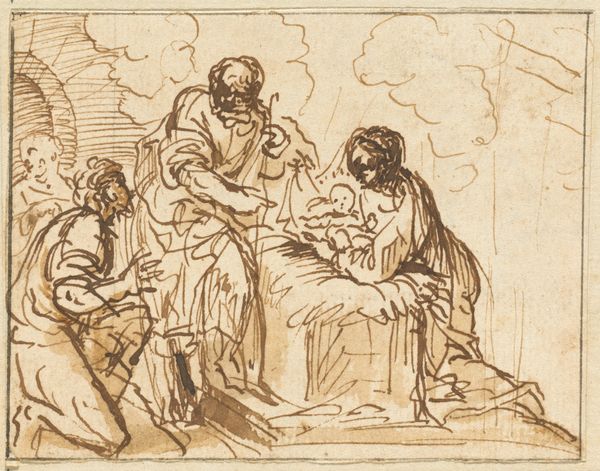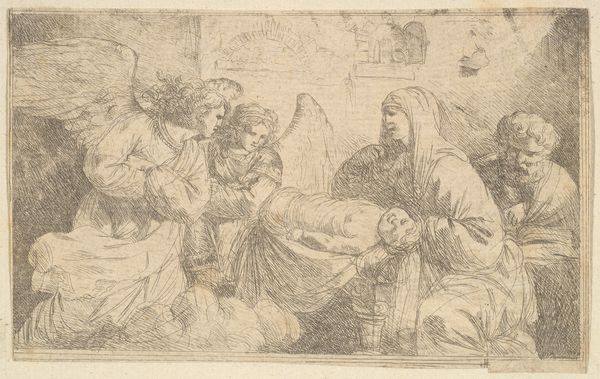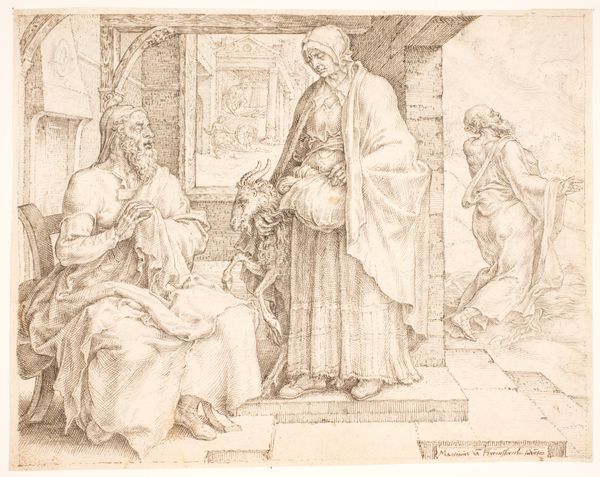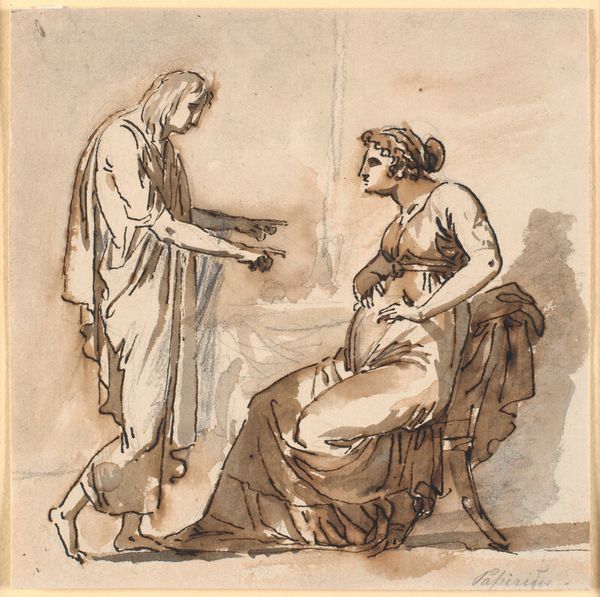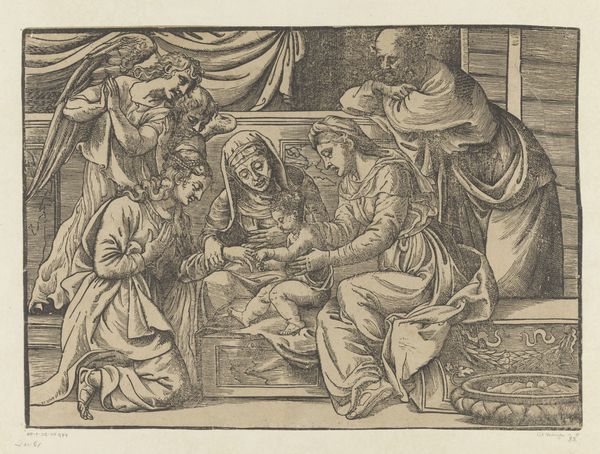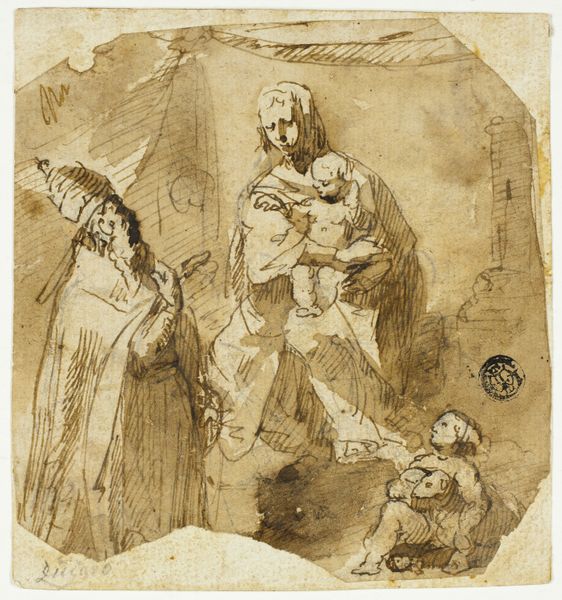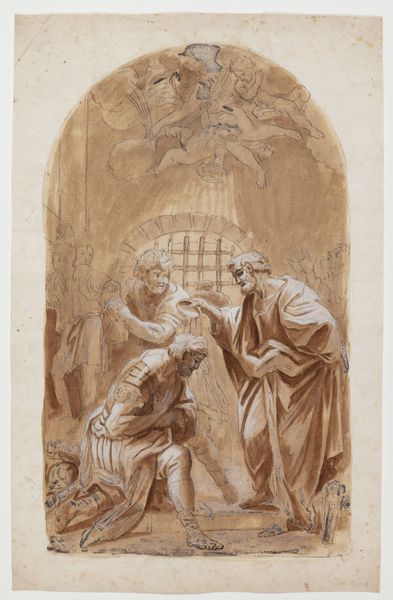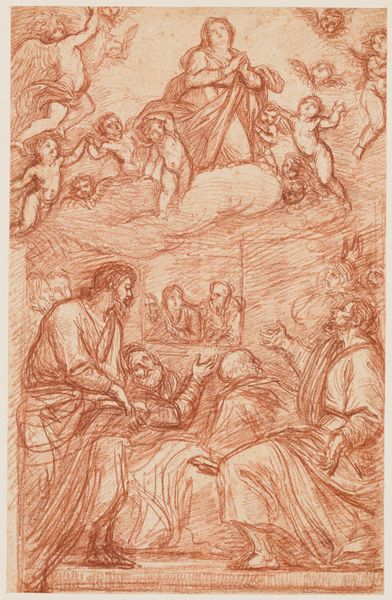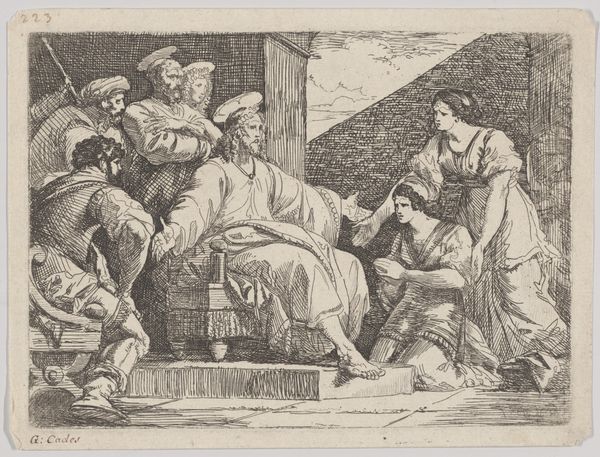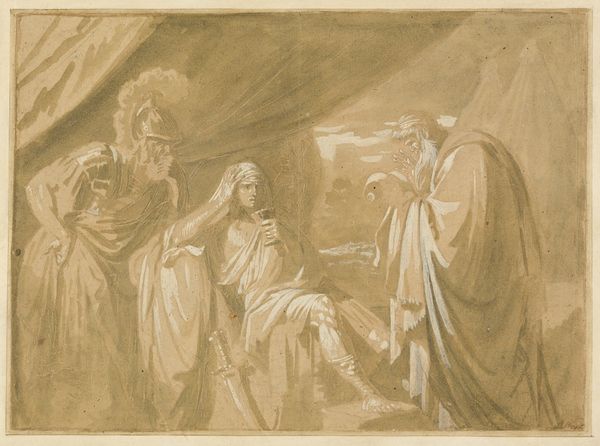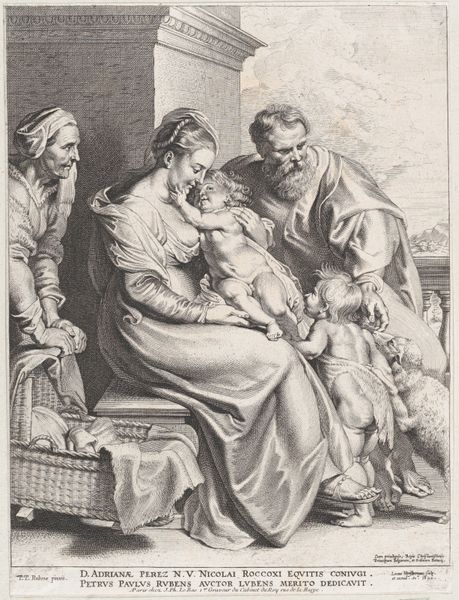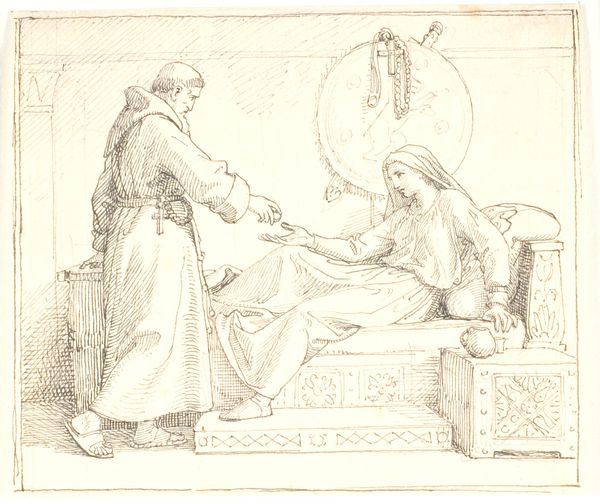
En konge modtager en krans af en knælende kvinde 1743 - 1809
0:00
0:00
drawing, ink
#
drawing
#
neoclacissism
#
figuration
#
ink
#
history-painting
#
academic-art
Dimensions: 100 mm (height) x 150 mm (width) (bladmaal)
Curator: Immediately, the ink wash of "En konge modtager en krans af en knælende kvinde"—A King Receiving a Garland from a Kneeling Woman—strikes me. It evokes a subdued gravitas despite its modest scale. Editor: Indeed. Completed by Nicolai Abildgaard, sometime between 1743 and 1809, this drawing feels steeped in a narrative of power and deference. It almost begs for interpretation beyond the simple gesture. Curator: It is the classical revival made manifest. The stark rendering of the draped figures echoes antique statuary, lending a certain timeless quality to the scene. Note how Abildgaard frames the characters, setting them off like a frieze in low relief. What stories might this evoke for you? Editor: The garland is such a powerful symbol. In so many traditions it marks accomplishment or nobility. The woman's prostration before the king, offering the wreath, suggests a recognition of his authority. There are echoes here of Roman triumphs or perhaps a ritual from Greek drama. What stories are brought forward into the viewer's memory? Curator: Certainly, Abildgaard, as a product of his age, understood the power of these classical allusions. Yet the scene avoids overt triumph. There is a restraint in the king's reception, a sense of duty fulfilled rather than joyous acceptance. Editor: This somberness almost contradicts the neoclassical exuberance typical of the period, a time when there was renewed interest in rational form. The palette is very constrained. He avoids sharp contours, which blurs the boundary between the characters' clothing and the background. I wonder why he does this. It’s almost as if he’s creating an allegory using historical images to represent some more abstract idea about social hierarchy. Curator: Yes, it points towards history-painting of that era, imbued with these grand symbolic gestures of history and a connection to more immediate values, morals, and expectations within the cultural narrative. Editor: It leaves me contemplating the cyclical nature of power, the eternal dance of reverence and dominion that echoes throughout human history. Curator: It’s this power of allusion to universal human truths through careful composition that elevates it, ultimately transcending time.
Comments
No comments
Be the first to comment and join the conversation on the ultimate creative platform.
